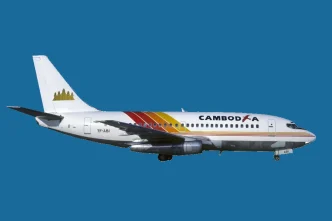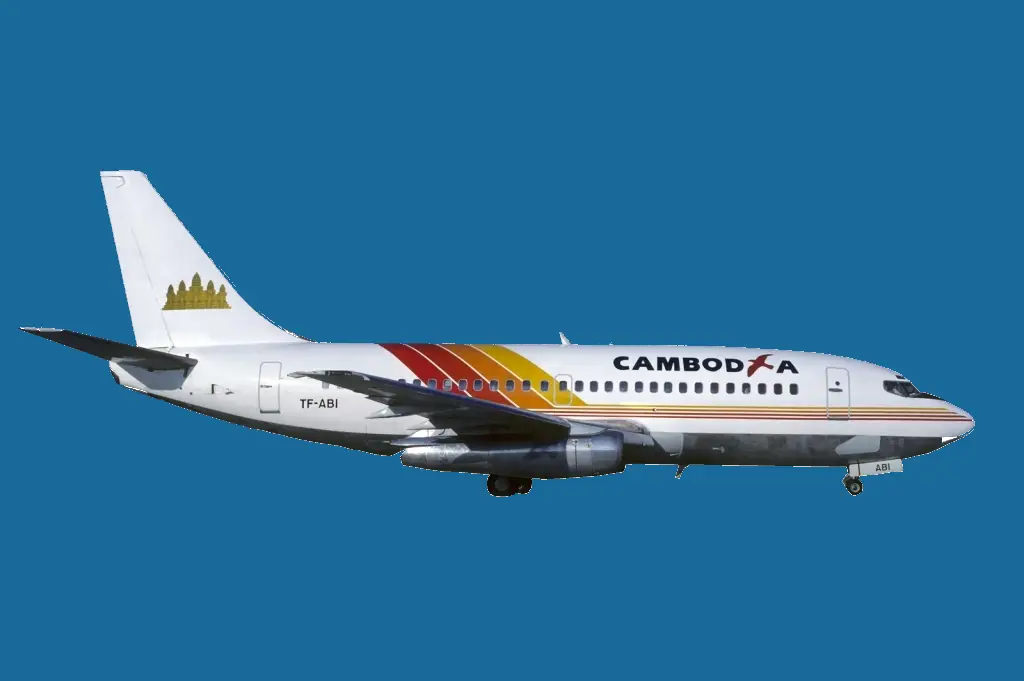Cambodia’s aviation sector is riding a wave of growth, with over 2.5 million passengers and 22,686 flights passing through its three international airports in the first four months of 2025, signaling a robust recovery from the pandemic’s downturn. The imminent opening of the Techo International Airport in July, a $1.5 billion project to replace Phnom Penh’s existing hub, underscores the Kingdom’s ambition to become a regional aviation powerhouse. As tourist arrivals climb and cargo volumes rise, Cambodia’s strategic connectivity with 12 countries and 34 cities positions it to capitalize on Southeast Asia’s booming air travel market. Yet, economic uncertainties and infrastructure challenges could test this upward trajectory.
From January to April, Phnom Penh, Siem Reap, and Preah Sihanouk airports recorded a 17% increase in flights and an 18% surge in passengers compared to 2024, alongside an 8% rise in air cargo to 22,350 tonnes. April alone saw 5,252 flights and 564,573 passengers, up 12% and 15% respectively, with cargo stable at 5,202 tonnes. The growth reflects Cambodia’s appeal as a tourism and trade hub, driven by connections to Thailand, China, Vietnam, Singapore, Malaysia, and South Korea. If sustained, this momentum could see the Kingdom meet its goal of 25 million passengers by 2035, but global demand and domestic capacity remain critical hurdles.
Techo Airport: A Game-Changer
The Techo International Airport, set for trial operations on 10 July, marks a pivotal step. Spanning 2,600 hectares, this 4F-class facility will handle large aircraft like the Airbus A380 and Boeing 747, with an initial capacity of 13 million passengers annually. Planned in three phases—15 million by 2030, 30 million by 2050, and 45 million thereafter—it aims to ease congestion at Phnom Penh’s current airport and attract major carriers. Mao Havannall, Minister in charge of the State Secretariat of Civil Aviation, said the airport will enhance connectivity, drawing airlines like Turkish Airlines and Emirates, which recently launched routes to Phnom Penh and Siem Reap.
The $1.5 billion project, led by Cambodia Airport Investment Co Ltd, reflects Cambodia’s post-Covid tourism push, which saw 6.7 million visitors in 2024, a 23% jump. By replacing Phnom Penh’s outdated hub, Techo could boost arrivals further, supporting the government’s vision of upper middle-income status by 2030. However, analysts warn that weaker global demand or delays in phase two could limit its impact, requiring sustained investment and policy reforms.
Tourism and Trade Fuel Growth
Cambodia’s aviation boom ties closely to its tourism recovery. Siem Reap’s Angkor Wat, a UNESCO site, and coastal Preah Sihanouk draw millions, with 2023’s 5.45 million foreign visitors generating $3.04 billion. The sector’s resilience, bolstered by 31 airlines including four domestic carriers, has driven a 22% passenger increase in 2024 to 6.24 million. New routes, like Cambodia Airways’ Phnom Penh-Hong Kong service, strengthen ties with key markets like China, which sent 417,000 visitors in 2013 and remains a top source.
Cargo growth, though slower at 8% in 2025, supports Cambodia’s export-driven economy, particularly garments and electronics. The 40% cargo surge in 2024 to 77,752 tonnes highlights e-commerce and trade with ASEAN partners. Sinn Chanserey Vutha, SSCA spokesperson, noted that sustained air transport growth hinges on production and economic stability. If global trade slows, cargo volumes may stagnate, but Cambodia’s liberalized aviation policies, allowing up to 100% foreign airline ownership, could attract investment.
Strategic Reforms and Challenges
The Civil Aviation Strategic Plan 2025–2030 outlines eight priorities, including safety, air traffic efficiency, and human resource development. A pilot training school, planned for 2021 but delayed, aims to address a 90% shortage in aviation professionals, offering affordable tuition and salaries starting at $3,000 monthly. The SSCA’s push for liberalized air rights and infrastructure upgrades, like Sihanoukville’s expansion to 7 million passengers by 2025, aims to sustain growth. Cambodia’s 6.3% GDP growth forecast for 2025, led by an 8.6% industrial sector rise, provides a strong backdrop.
Yet, risks loom. Global economic slowdowns, particularly in the US, EU, or China, could curb tourism and exports. Cambodia’s real estate slump and climate vulnerabilities, like floods, threaten broader sentiment. The National Aviation Policy 2025–2035’s 25-million-passenger goal assumes robust demand, but political stability and infrastructure delivery are critical. X posts reflect optimism, with users praising new routes, but some flag logistical concerns at existing airports. If Techo’s operations falter or costs escalate, public confidence could wane.
Regional Context and Ambition
Cambodia’s aviation growth outpaces neighbors like Thailand, projected at 2.3% GDP growth in 2024, due to political uncertainties. Vietnam and Singapore remain connectivity leaders, but Cambodia’s focus on direct flights and budget carriers like AirAsia Cambodia sets it apart. The Kingdom’s 5.4% economic growth in 2023 and 5.8% projection for 2025, per the World Bank, signal resilience. Investments in Siem Reap’s Angkor International Airport and Dara Sakor’s upcoming hub complement Techo, creating a multi-hub strategy.
If Cambodia sustains its trajectory, it could rival ASEAN peers, leveraging its 34 global destinations and cultural draw. Failure to address capacity or safety risks could cede ground to competitors. As Havannall said, the sector’s future depends on strategic execution and global cooperation. With Techo’s launch, Cambodia is betting big on aviation to drive its economic ascent.















